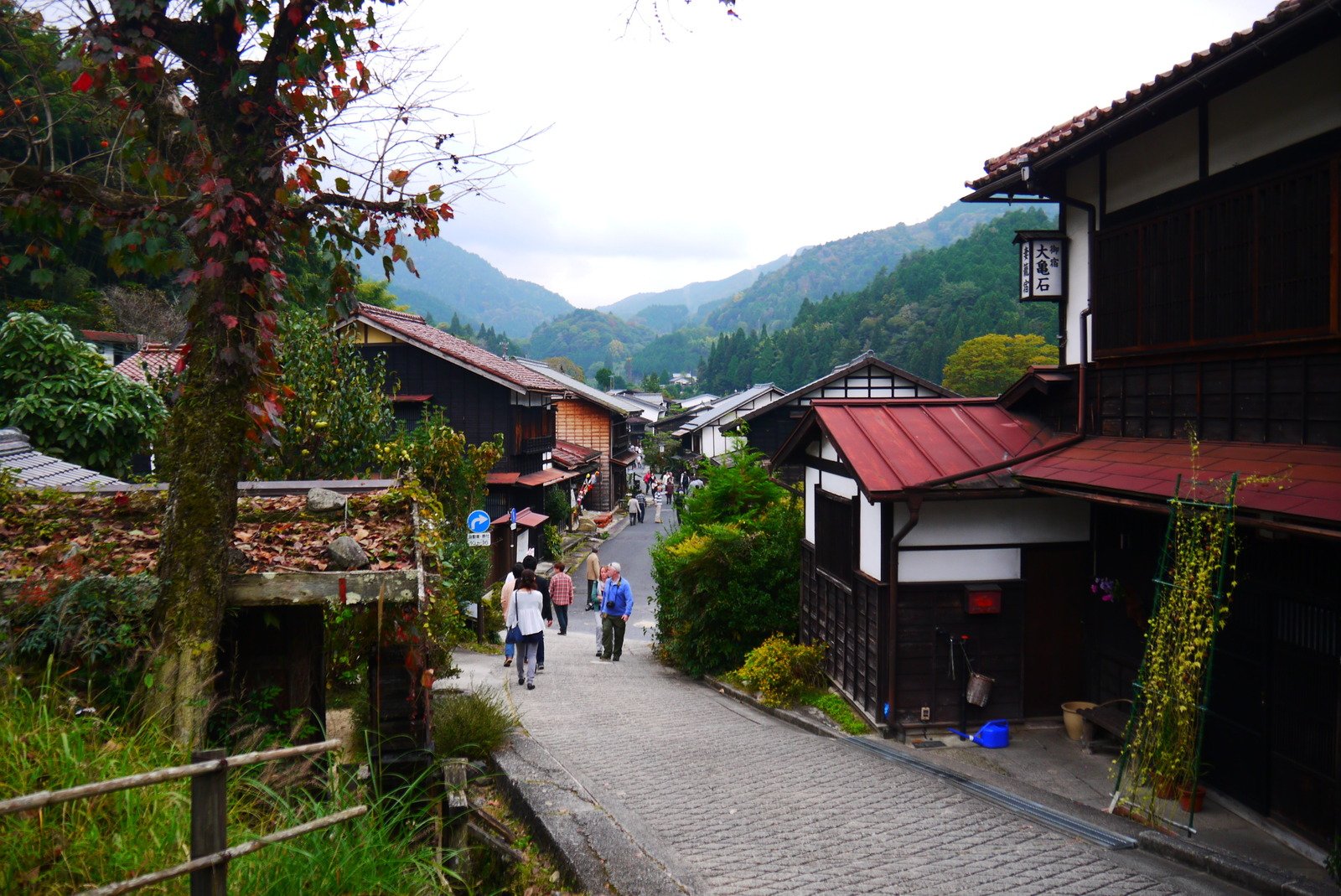
Take an excursion to the Nagano countryside for a slice of samurai and ninja history.
3-Day Tour of Nagano for Japanese History and Culture Buffs
Trip Highlights
- Walk the Edo-Era Nakasendo Trail (a.k.a. the “Samurai Trail”)
- Stay at a classic inn at a well-preserved post town
- Tour Matsumoto Castle, one of Japan’s only original wooden castles
- Search for ninja amongst ancient cedar trees in Togakushi
Itinerary
Day 1: Nakasendo Walk and Post-town Stay
Walk back to samurai times trekking through the Kiso Valley.
9:57 Depart Shin-Osaka Station on Tokaido Shinkansen
50 min.
11:00 Depart Nagoya to Nakatsugawa on JR Limited Express “Shinano” bound for Nagano
48 min.
12:15 Depart Nakatsugawa Bus Stop on local bus to Magome
25 min.
12:50 Magome
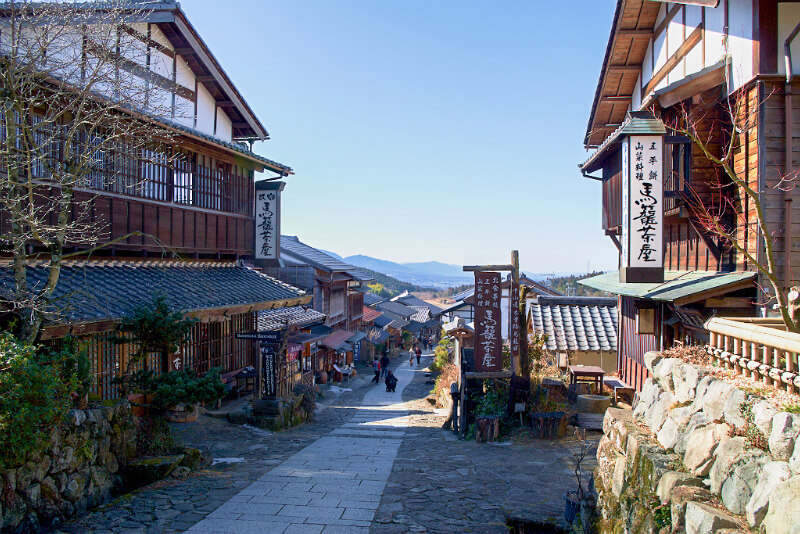
During the Edo Era, there were two main roads that connected Osaka and Kyoto with old Edo (present-day Tokyo): the Tokaido along the ocean, and the Nakasendo through Nagano’s mountains. Along the way were a series of post towns with inns that hosted the travelers.
Magome is a painstakingly-preserved Nakasendo post town that features many cafes and shops. Especially notable is the Shimazaki Toson Museum, honoring the 19th century author. While in Magome, be sure to try goheimochi (grilled rice on a stick) for lunch.
Baggage forwarding service between Magome and Tsumago is available, or you can send your bags ahead to your inn in Tsumago from your accommodation in Osaka via takkyubin luggage service.
13:30 Walk the Nakasendo from Magome to Tsumago
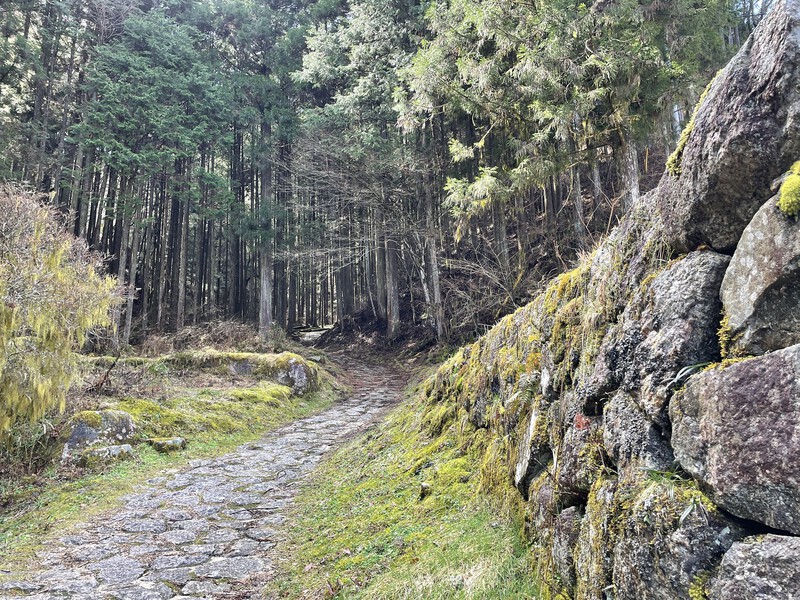
This 7.5-kilometer walk between historic post towns offers a glimpse into the Japanese countryside as well as stunning mountain and forest scenery with a historic teahouse and a pair of waterfalls along the way.
13:45 Depart Magome to Tateba Chaya on foot
45 min.
14:30 Tateba Chaya
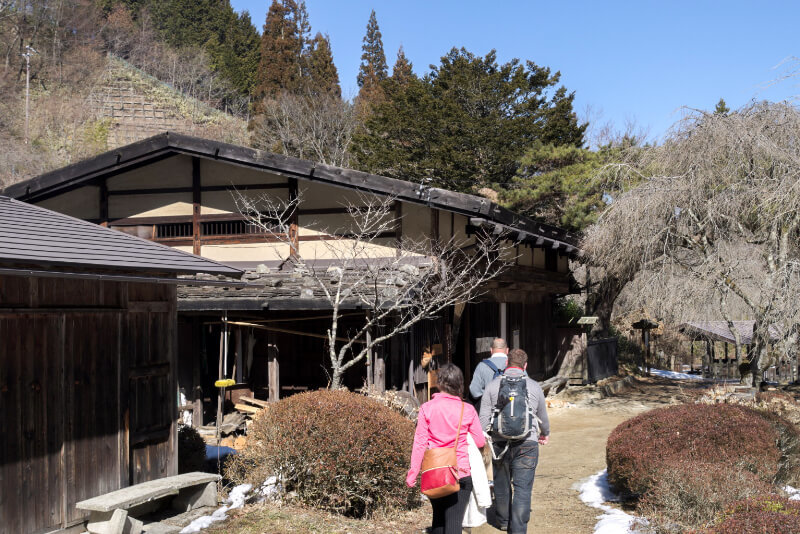
Stop at the Tateba Chaya. This original Nakasendo teahouse offers travelers complimentary tea.
14:45 Depart Tateba Chaya to Tsumago on foot
75 min.
16:00 Historic Townscape of Tsumago
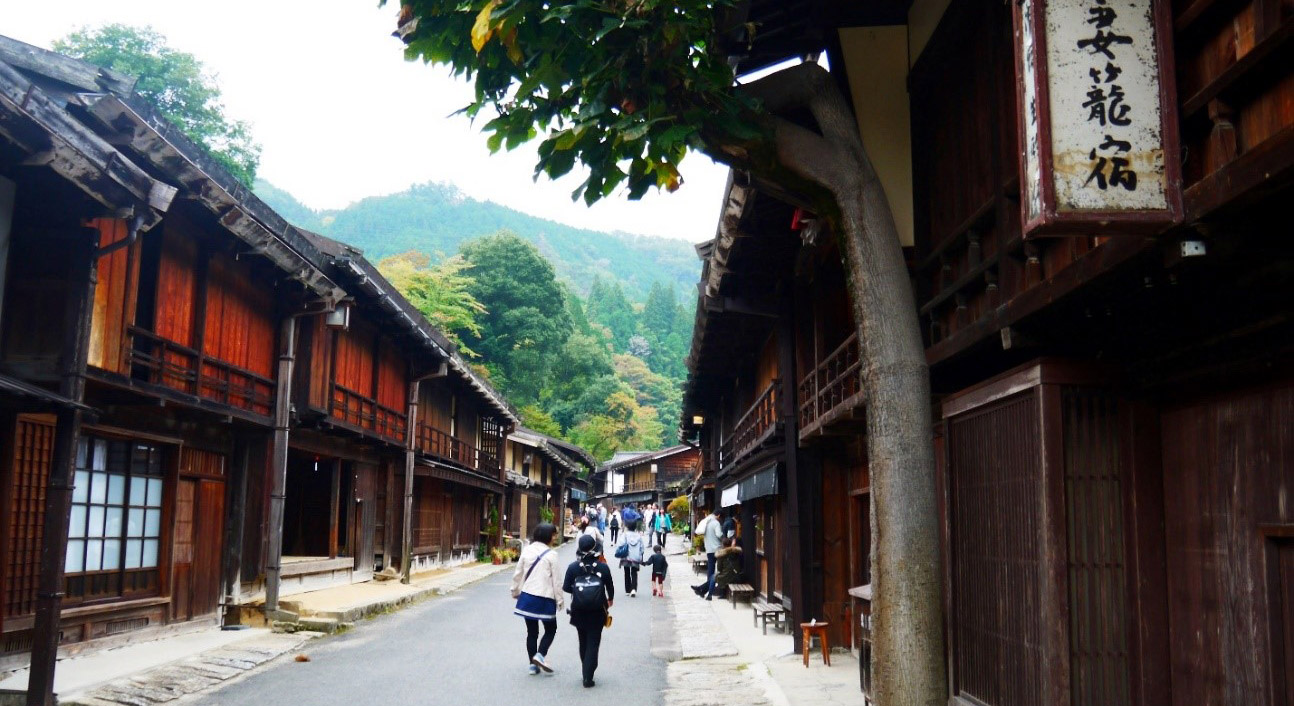
Tsumago is arguably the best-preserved post town on the Nakasendo because many of its original buildings are intact. Of special importance is the Waki Honjin, which the Meiji Emperor visited in the late 1800s.
17:00 Ryokan Stay
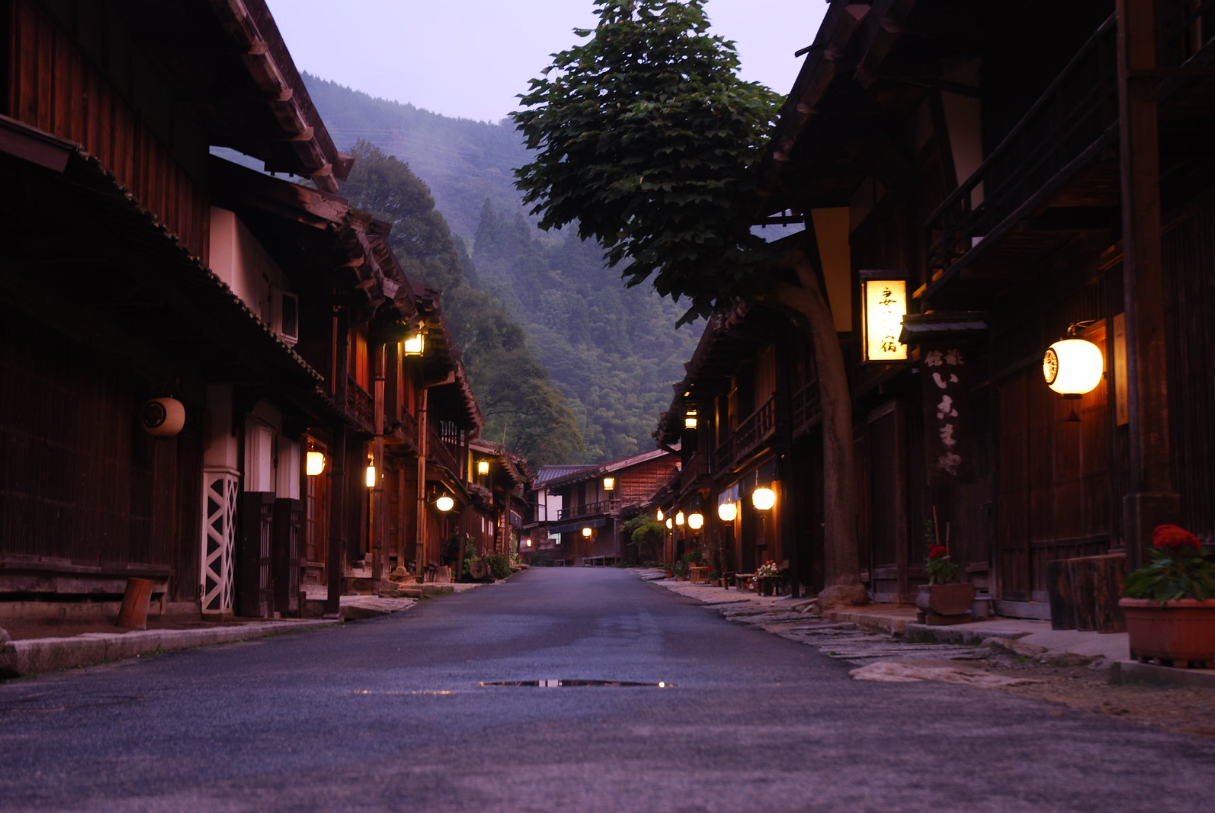
Immerse yourself in the post town ambience by spending the night in an actual “hatago,” a ryokan (traditional inn) used by travelers during samurai times.
Day 2: Castle Town Matsumoto
Explore this classic castle town and the Ukiyo-e Museum.
9:44 Depart Tsumago Bus Stop to Nagiso on local bus
10 min.
10:19 Depart Nagiso to Matsumoto
92 min.
11:51 Matsumoto Station
Walk (10 min.)
12:00 Matsumoto City Center
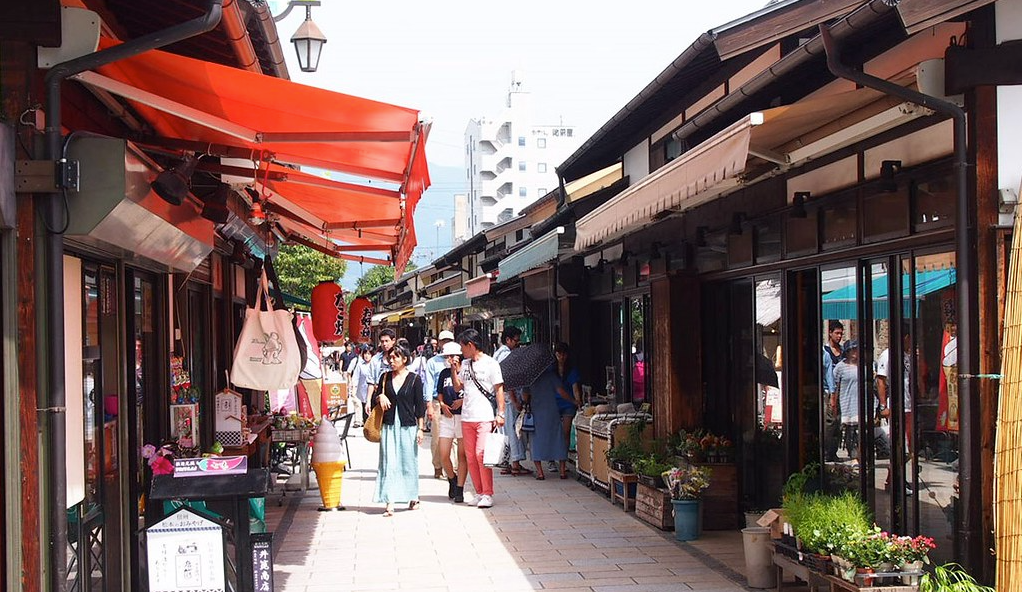
Matsumoto is a classic castle town with the bustling Nawate and Nakamachi Shopping Streets which are especially reminiscent of the samurai era. Stop in at one of the many cafes along those promenades for lunch.
Walk (10 min.)
13:00 Matsumoto Castle
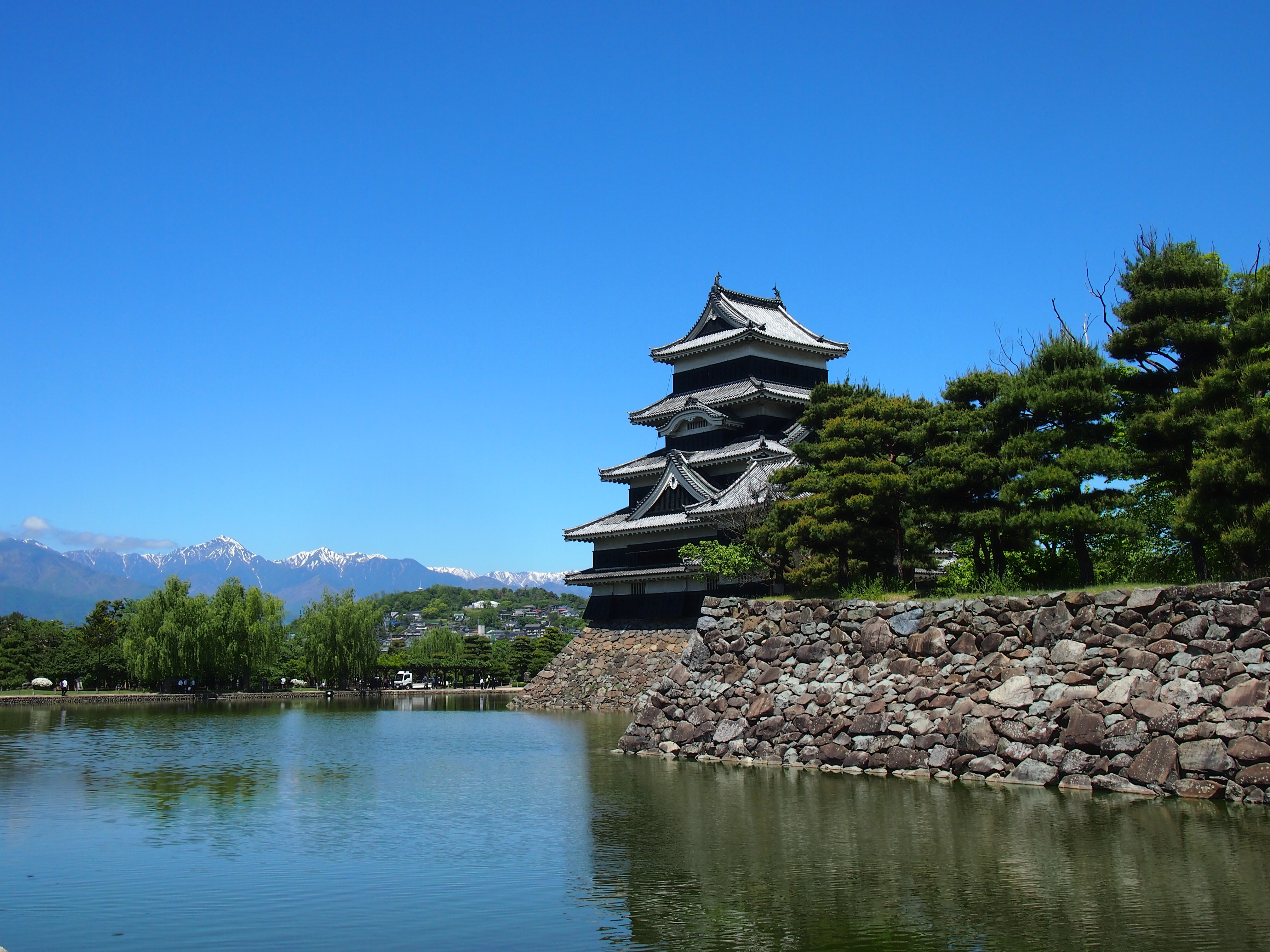
Matsumoto Castle is one of the only original wooden castles remaining in Japan. With the Japanese Alps in the background, the view from the top floor is spectacular on a clear day.
See here for differences between Osaka and Matsumoto castles.
14:00 Depart Matsumoto Castle to Matsumoto Station
10 min.
14:15 Depart Matsumoto Station Alps Exit stop to Ukiyo-e Museum / Rekishinosato stop on Matsumoto City Bus #53 bound for Komiya Danchi
29 min. Alternatively: Go by rental bicycle (30 min.)
Japan Ukiyo-e Museum and Court and Historical Village (Rekishinosato)
The JUM (Japan Ukiyo-e Museum) holds the world’s largest private collection of Ukiyo-e (woodblock prints), several of which depict scenes of samurai traveling to old Edo. Adjacent is the Court and Historical Village for history buffs, featuring an old wooden courthouse and displays the area’s silk production heritage.
15:28 Depart Ukiyo-e Museum stop
28 min.
16:05 Depart Matsumoto to Nagano on JR Limited Express “Shinano”
51 min.
Hotel or Guesthouse in central Nagano City, or a shukubo temple lodging near Zenkoji Temple
Day 3: The Ninja and Temple Town of Nagano
Nagano City, famous for hosting the 1998 Winter Olympics, is at heart a temple town based around the venerable Zenkoji Temple. Above the urban center is the Togakushi Highland famous for its spirituality, soba (buckwheat) noodles and ninjas!
O-Asaji Morning Ritual at Zenkoji Temple
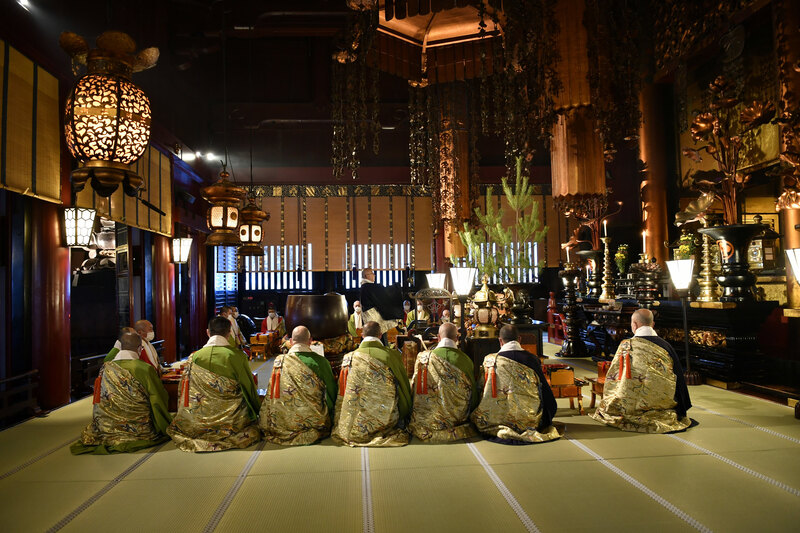
Zenkoji Temple is awe-inspiring any time of day but the O-Asaji morning ritual makes going at daybreak especially remarkable. The top abbot proceeds in tapping visitors on their heads with beads before commencing a 30-minute chant. This is repeated then by the top abbess. Be sure to also walk through the pitch-dark “Kaidan-meguri” to find the elusive “key to heaven.”
8:37 Depart Zenkoji Daimon stop to Togakushi Okusha stop on Alpico Bus No. 70
60 min.
9:40 On foot by trail to Togakushi Okusha
30 min.
10:10 Togakushi Okusha

Togakushi is famous for its five shrines, especially the Okusha shrine, and the ancient cedar trees lining its approach. The towering cedars will imbue you with the power of nature.
10:30 Return on foot to the Okusha trailhead
30 min.
11:00 Togakure Ninpo Museum
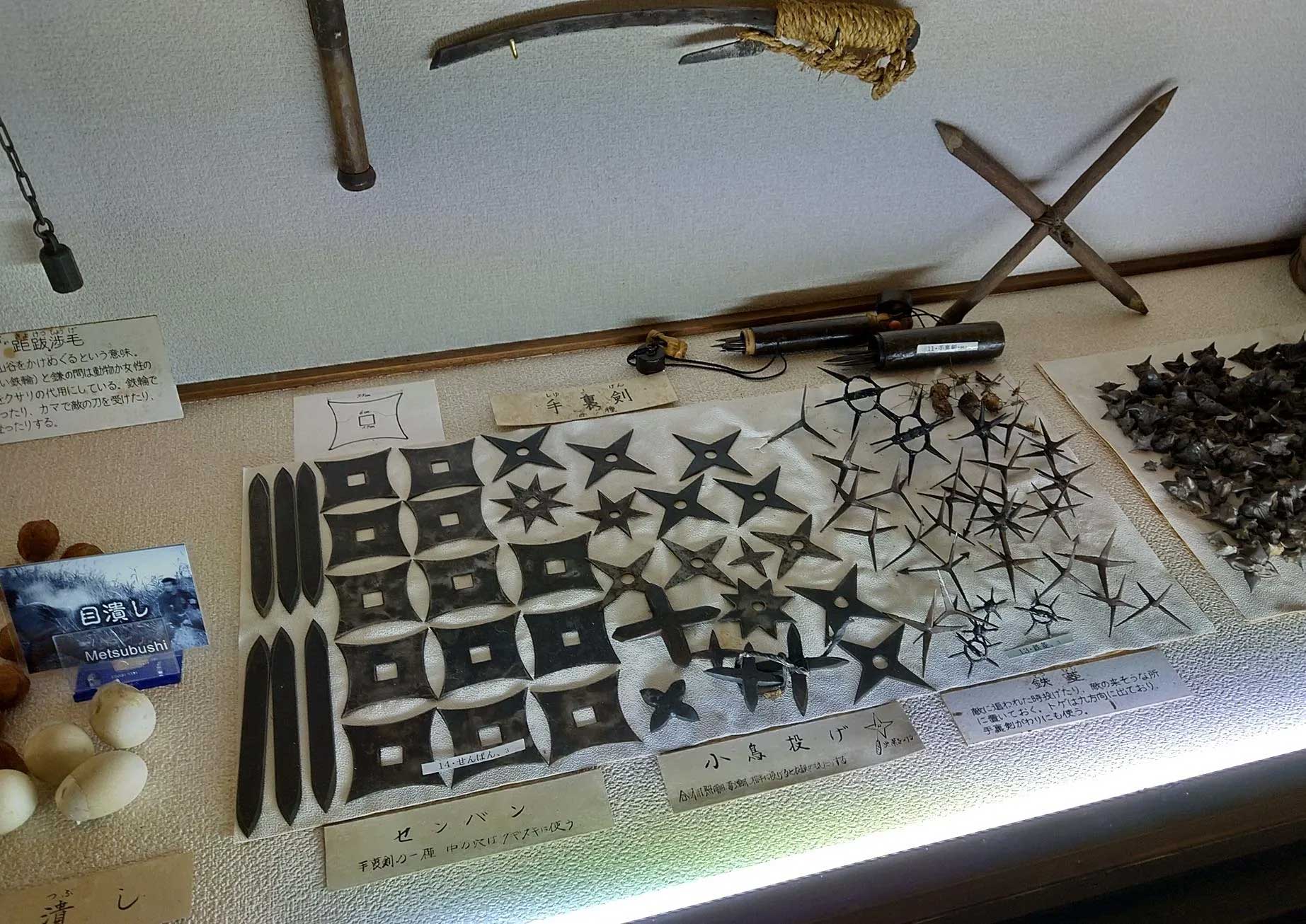
Togakure-ryu, one of the top three schools of ninjutsu, has its roots in the wilderness of Togakushi. At the Ninpo Museum there are displays of the tools and weapons ninja used, a shuriken throwing range, and a ninja house with hidden passages and trap doors.
For lunch, treat yourself to the local soba noodles at one of Togakushi’s many soba restaurants.
13:27 Return to Nagano Station via Alpico Bus no. 70
60 min.
From Nagano Station, it is a convenient 70 to 90 minutes to Kanazawa, or 90 to 100 minutes to Tokyo by Shinkansen.
Map
For further reference, Osaka’s official tourism website features a 3-day / 2-night itinerary for seeing more of Kiso and vicinity and a 4-day / 3-night itinerary for Matsumoto and vicinity.

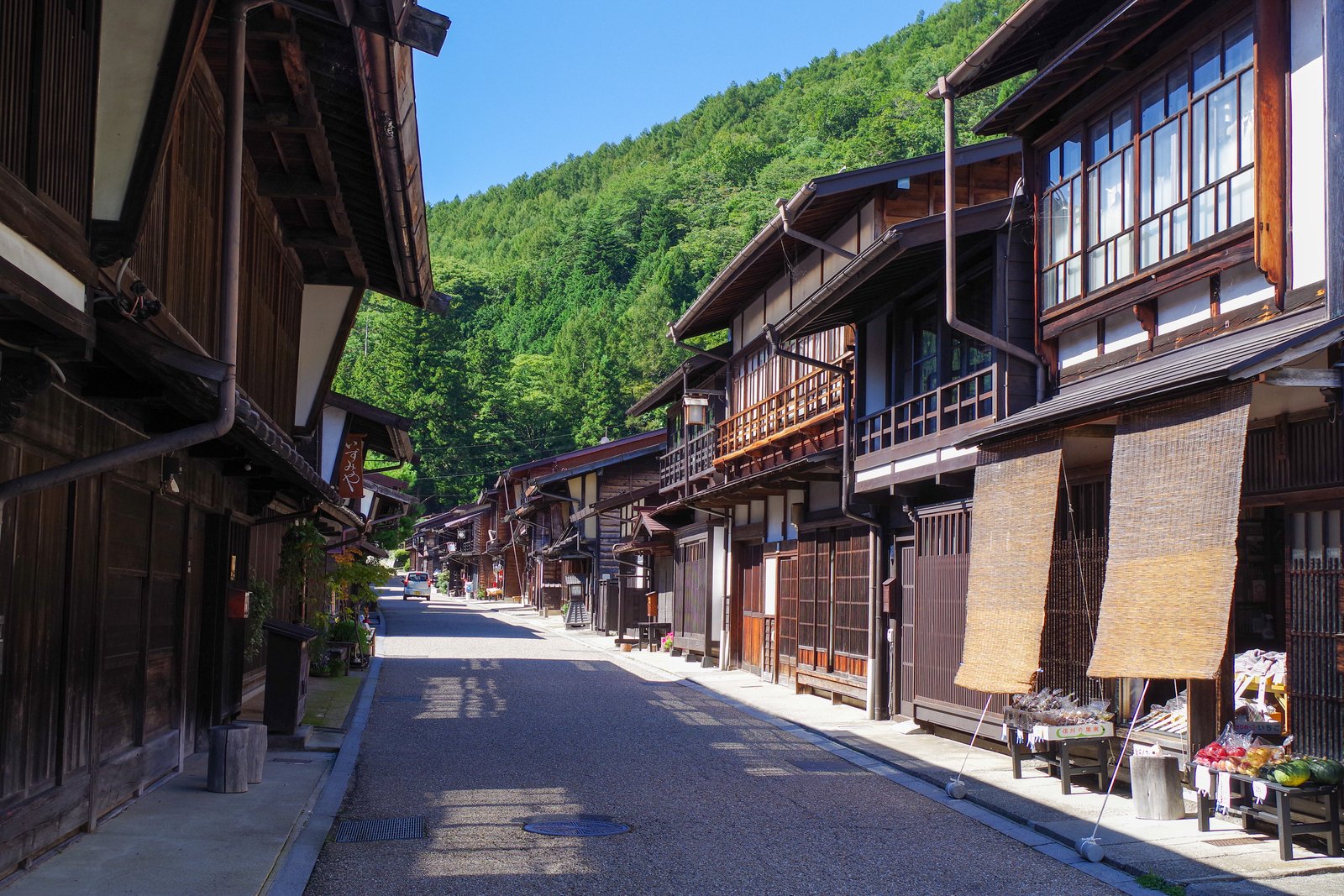
![Matsumoto Castle [Guide]](https://www.go-nagano.net/hubfs/Imported_Blog_Media/18040_ext_01_en_0_L.jpg)